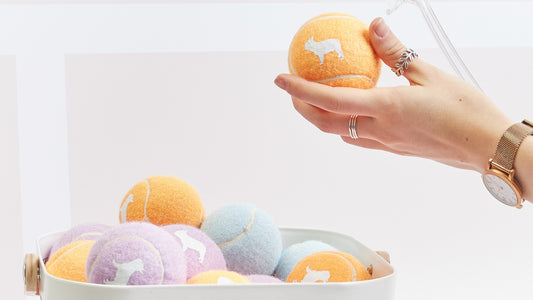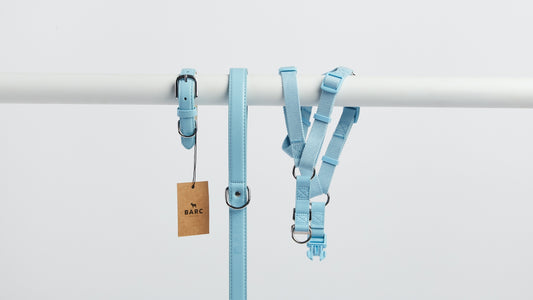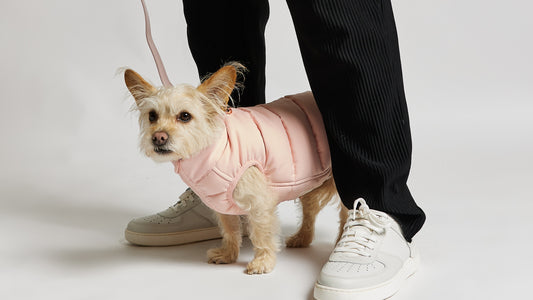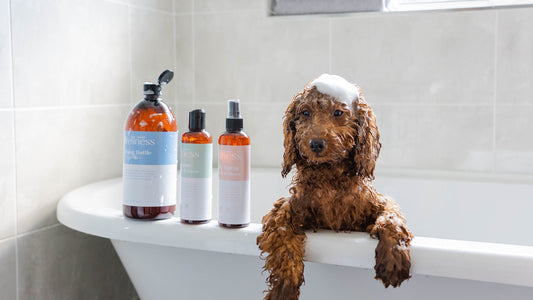Woof woof, fellow dog lovers! I know exactly how important it is to stay clean and smelling fresh.
But the question is: How often should a dog be bathed? I bet it's a question that many pet parents struggle with.
I remember one time when my neighbour's dog, Max, got so dirty he looked like a walking mud pie. His owner decided to give him a bath every day for a week! Poor Max was so traumatised by the experience that he hid under the bed every time he saw a bucket of water.
Needless to say, that’s not the best way to handle things!
In this article, you will learn more about shower time for your dog, so grab a towel and a bag of treats because we're about to dive into the world of canine hygiene.
Let's get started!

Factors that Determine Bathing Frequency
Long, double-coated breeds
Imagine a majestic Siberian Husky, with its luxurious double coat, leaping through the snow. Gorgeous, right?
But wait! With great fluff comes great responsibility.
These double-coated breeds need more frequent baths, as their thick undercoats tend to trap dirt and debris.
However, don't go overboard!
Over-bathing can strip the natural oils, leaving your pup's coat drier than a desert.
Aim for a bath every 4-6 weeks, depending on how adventurous they are.
Short-haired breeds
Now, picture a sleek and shiny Greyhound, its short coat glistening in the sun.
These short-haired breeds have it easy when it comes to bath time.
With less fur to hold onto dirt, they require less frequent baths.
You can get away with bathing them every 6-8 weeks, or even longer if they're not the outdoorsy type.
Lucky them, right?
Activity level
This is the wild card factor in our bathing frequency equation.
An active dog that loves to romp in mud puddles will need more baths than a couch potato who only ventures outside to do their business.
So, if your dog's hobbies include rolling in every smelly thing they find, you'll need to adjust your bathing schedule accordingly.
Health Conditions
Just like with us humans, certain health conditions can affect a dog's grooming needs.
For example, dogs with allergies or skin conditions may need medicated baths more frequently to keep them comfortable and itch-free.
Consult your trusty vet (shoutout to Dr. Barker!) for guidance on the appropriate bathing frequency for your pet's specific needs.
Age
Puppies and senior dogs, like babies and grandparents, need special care.
The little ones are prone to getting dirty as they explore the world, but their skin is also more sensitive.
Aim for gentle baths every 3-4 weeks to keep them clean without causing irritation.
On the other hand, senior dogs may have mobility issues that make grooming more challenging.
Adapt your bathing routine to accommodate their needs and make it a positive experience for both of you.
Lifestyle
Last but certainly not least, let's talk about lifestyle.
Just like how I prefer a long bubble bath after a week of intense workouts (or binge-watching reality TV), your dog's lifestyle plays a role in determining their bathing frequency.
A pampered pooch who spends most of their time indoors will need fewer baths than an adventurous dog who loves to frolic through fields and forests.
Take your dog's daily routine into account when deciding how often to break out the shampoo.
The Risks of Over-Bathing
As much as we love our squeaky-clean pups, there is such a thing as too much of a good thing.
So, let's talk about the darker side of doggy bathing: over-bathing.
How does over-bathing harm dogs?
Picture this: a dog owner (we'll call them Pat) is obsessed with keeping their pooch pristine. Pat bathes their dog every day, or sends his dog to the groomers very regularly, thinking they're doing the best thing for their beloved pet (it’s common to return with grooming injuries!).
Little does Pat know, they may be causing more harm than good.
You see, over-bathing can strip away the natural oils that protect your dog's skin and coat.
This can lead to dryness, irritation, and even skin infections.
So, before you turn your bathroom into a doggy spa, let's explore the effects of excessive bathing.
Effects of excessive bathing on the skin and coat
Excessive bathing can turn your dog's skin and coat from a luxurious, shiny masterpiece into a dry, dull disaster.
When you wash away those essential oils, you're leaving your dog's skin exposed and vulnerable.
This can result in itching, flaking, and even hot spots - the bane of every dog owner's existence.
Importance of using the right shampoo and conditioner
When it comes to bathing your pup, the right shampoo and conditioner can make all the difference.
Look for products designed specifically for dogs, as they have a different pH balance than human products.
Trust me, using your fancy salon shampoo on Fido is a big no-no.
Consider your dog's skin and coat type when choosing a shampoo and conditioner.
For example, if your dog has sensitive skin, opt for a gentle, hypoallergenic formula, just like this Luxury Dog Shampoo from Barc London.
It's like choosing the perfect outfit for a night out - you want to look and feel fabulous, and so does your dog!
Signs That Your Dog Needs a Bath
Now that we've covered the risks of over-bathing, let's talk about how to determine when your dog is in desperate need of a good scrub.
Here are some telltale signs that it's time to break out the doggy shampoo.

- Visible dirt and debris: This one's pretty obvious. If your dog looks like they've been rolling around in a mud pit, it's probably time for a bath. No one wants a dirt-covered couch or bed, am I right?
- Scratching or itching: If your dog is constantly scratching or itching, it might be a sign that they need a bath. This could be due to dirty skin, or even a mild skin infection that needs attention. Of course, if the itching persists, a visit to the vet might be in order.
- Coat texture and appearance: A healthy dog's coat should be shiny and smooth. If your pup's coat is looking dull, matted, or greasy, it's time to lather, rinse, and repeat. Remember, a clean dog is a happy dog!
- Shedding: While shedding is a normal part of life for most dogs, excessive shedding could be a sign that it's time for a bath. Regular bathing can help remove loose hair and reduce shedding around your home. Say goodbye to fur-covered furniture!
Recommended Bathing Frequency
So, we've covered the factors that determine bathing frequency and the risks of over-bathing. Now, let's get down to brass tacks: how often should you actually bathe your dog?
Adjusting the frequency based on changes in the dog's lifestyle
As a general rule of thumb, most dogs need a bath every 4-6 weeks.
However, this can vary based on your dog's coat type, activity level, and lifestyle. The key is to be flexible and adjust the bathing frequency as needed.
For instance, if your dog starts attending doggy daycare and comes home dirtier than usual, you might need to up the bath game.
On the flip side, if your adventurous pup suddenly becomes a homebody, you can probably reduce the number of baths.
Remember, keep an eye on your dog's coat, skin, and overall well-being to help determine the optimal bathing schedule.
Bathing Techniques and Tips
Alright, now that we've got the frequency sorted out, let's talk about the actual bathing process.
After all, we want this to be a pleasant experience for both you and your dog.

How to prepare for a bath
Preparation is key to a successful doggy bath.
Start by gathering all the supplies you'll need, like dog shampoo, conditioner, a towel, and a brush.
Trust me, you don't want to be scrambling for that towel when your dog is dripping wet and eager to escape.
Next, make sure the bathing area is safe and comfortable.
Use a non-slip mat in the tub or sink to prevent slips and spills.
And don't forget to reward your dog with treats and praise throughout the process - positive reinforcement works wonders!
Proper bathing techniques
Now, let's get down to business.- Begin by thoroughly wetting your dog's coat with warm water.
- Apply the shampoo, starting at the neck and working your way down.
- Lather, rinse, and repeat if necessary.
- Be gentle around sensitive areas like the eyes, ears, and face.
- Use a washcloth to clean those delicate spots.
- When it's time to rinse, make sure to get all the soap out of your dog's coat to prevent irritation.
- If you're using conditioner, follow the same process.
And don't forget to give your dog a nice massage while you're at it - they deserve some pampering, too!
Drying techniques
After the bath, it's time to dry your dog off.
Use a large, absorbent towel to gently pat your dog dry.
Avoid rubbing too hard, as this can cause tangles and mats in the fur.
If your dog tolerates it, you can use a hairdryer on the lowest setting to speed up the process.
Just make sure to keep the dryer moving to avoid overheating any one spot.
Grooming and brushing after a bath
Once your dog is dry, it's time for some post-bath grooming.
Depending on your dog's coat type, you might need to brush, comb, or even trim their fur.
Regular brushing after a bath helps remove loose hair, prevent tangles, and keep your dog's coat looking its best.
Plus, it's a great bonding activity for you and your furry friend!
In Conclusion
And so, our sudsy adventure comes to an end.
Remember, the key to successful doggy bathing is balance, flexibility, and a dash of humour.
Keep these tips in mind, and you'll soon be the envy of every pet parent at the dog park.
Until next time, happy splashing!
---
Author bio: Zack Keithy is the Chief Editor at Daily Dog Drama. He was formerly a certified vet tech for a good 6 years before moving on to greener pastures. Right now, he is still heavily involved in dog parenting duties with his two dogs, Molly and Bella. At the same time, he is busy creating lots of useful resources such as educating people on the number of puppies a dog can have and many other topics. Check them out on his blog!




1 comment
Thank you very much
Helpful information 👋🏼👋🏼